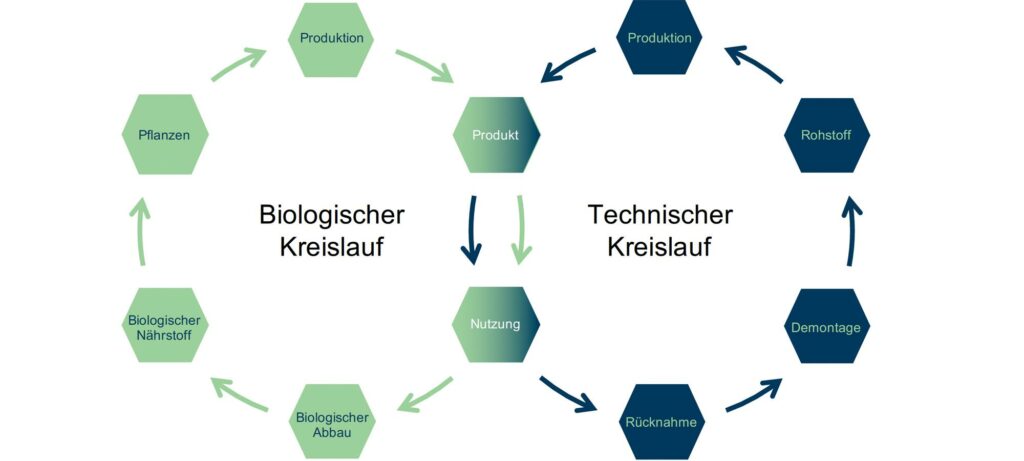
Circular economy and recycling
The circular economy is an economic system that aims to make optimum use of resources and minimize the uneconomical use of resources.
Such an economic system operates in a cycle and thus eliminates the concept of “waste”. The aim is to produce goods and services while greatly limiting the consumption and waste of raw materials and the use of non-renewable energy sources. Sustainable use in the circular economy does not lead to a decline in quality of life or loss of revenue.
The circular economy encompasses products, infrastructure and services and can be applied to any industrial sector. This includes both “technical” (metals, minerals, fossil resources) and “biological” resources (biomass, wood, etc.).
An example of a circular economy model is the implementation of rental models in traditional ownership sectors (e.g. electronics, clothing, furniture, transportation). By renting the same product to multiple customers, manufacturers can increase sales per unit and thus reduce the need for more production to increase sales.
Recycling initiatives are often referred to as the circular economy and are the most widespread models. Circular models can thus be defined as business models that integrate recycling measures, efficiency improvements, a more intensive use phase and the substitution of products with service and software solutions.
A further development of the circular economy approach is “cradle to cradle”, a biomimetic approach to the design of products and systems that models human industry on nature and regards materials as “nutrients” that circulate in a metabolism.
The concept is a holistic, economic, industrial and social framework with the aim of developing systems that are not only efficient but also essentially waste-free.
The cradle-to-cradle approach can be applied not only to industrial processes, but also to other systems (social systems, linear economic systems, etc.)
